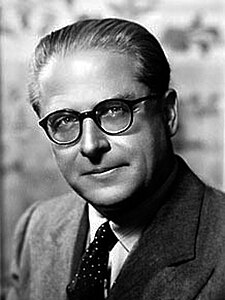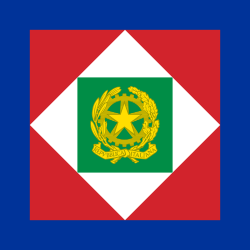Giovanni Gronchi
| Giovanni Gronchi | |
|---|---|
 | |
| Prezident Itálie | |
| Ve funkci: 11. května 1955 – 11. května 1962 | |
| Předchůdce | Luigi Einaudi |
| Nástupce | Antonio Segni |
| Stranická příslušnost | |
| Členství | Křesťanská demokracie |
| Rodné jméno | Giovanni Gronchi |
| Narození | 10. září 1887 Pontedera |
| Úmrtí | 17. října 1978 (ve věku 91 let) Řím |
| Choť | Carla Gronchi |
| Alma mater | Scuola Normale Superiore. Classe di Lettere e Filosofia (1905–1908) Univerzita v Pise |
| Profese | politik |
| Náboženství | katolicismus |
| Ocenění | velkokříž speciální třídy Záslužného řádu Spolkové republiky Německo (1956) čestný rytíř velkokříže Řádu lázně (1958) velkokříž s řetězem Řádu bílé růže (1960) bronzová medaile Za chrabrost Silver Medal of Military Valour … více na Wikidatech |
| Podpis |  |
| Commons | Giovanni Gronchi |
| Některá data mohou pocházet z datové položky. | |
Giovanni Gronchi (10. září 1887 – 17. října 1978) byl italský politik. V letech 1955–1962 byl prezidentem Itálie, třetím v historii. Předtím, v letech 1948–1955 zastával funkci předsedy dolní komory italského parlamentu, 1944–1946 byl ministrem průmyslu. Byl představitelem Křesťanskodemokratické strany (Democrazia Cristiana), k jejímž zakladatelům patřil a od jejího počátku vedl její levicovou frakci, která oponovala Alcide de Gasperimu, který usiloval o vypuzení komunistů a socialistů z politického systému. V prezidentském úřadě ho poškodilo jmenování kontroverzního premiéra Fernando Tambroniho, který se v parlamentu opíral o neofašistické síly, což vyvolalo silné nepokoje po celé Itálii. I proto nebyl Gronchi znovu nominován do prezidentské volby roku 1962, přestože o to usiloval.
Vyznamenání
| Stát | Stuha | Název | Datum udělení |
|---|---|---|---|
| velkokříž s řetězem Řádu osvoboditele generála San Martina | 1960, 16. června | ||
| velkokříž s řetězem Řádu bílé růže[1] | 1960 | ||
| velkokříž Řádu čestné legie | 1956, 25. dubna | ||
| řetěz Řádu Pahlaví | 1957 | ||
| stříbrná Vojenská záslužná medaile | 1916, 1. listopadu | ||
| bronzová Vojenská záslužná medaile | 1917 | ||
| velkokříž Řádu svatého Karla | 1959, 7. listopadu | ||
| velkokříž speciální třídy Záslužného řádu Spolkové republiky Německo | 1956, 18. července | ||
| velkokříž Řádu Spasitele | 1959, 19. května | ||
| čestný rytíř velkokříže Řádu lázně[2] | 1958, 13. května | ||
| velkokříž Řádu Chula Chom Klao | 1960, 1. října | ||
| rytíř Řádu zlaté ostruhy[3] | 1955, 5. prosince |
Odkazy
Reference
- ↑ Suomen Valkoisen Ruusun ritarikunnan suurristin ketjuineen ulkomaalaiset saajat. www.ritarikunnat.fi [online]. [cit. 2019-10-01]. Dostupné v archivu pořízeném z originálu.
- ↑ Archivovaná kopie. www.leighrayment.com [online]. [cit. 2019-10-01]. Dostupné v archivu pořízeném z originálu dne 2017-12-01.
- ↑ Hyginus Eugene Cardinale: Orders of Knighthood Awards and The Holy See – A historical, juridical and practical Compendium. Londyn: Van Duren, 1983, S. 33.
Externí odkazy
 Obrázky, zvuky či videa k tématu Giovanni Gronchi na Wikimedia Commons
Obrázky, zvuky či videa k tématu Giovanni Gronchi na Wikimedia Commons - Profil na Cronologia Leonardo Archivováno 2. 7. 2012 na Wayback Machine.
- Heslo v encyklopedii Britannica
- Heslo v encyklopedii Treccani
Média použitá na této stránce
Finská vlajka
The Flag of Vatican City State, as per the 2023 w:en:Fundamental Law of Vatican City State, reproducing Annex A which contains the official depiction of this version. See 2023 Fundamental Law of Vatican City State, art. 23, n. 1.
This 2023 flag is very similar to the flag used in the 1929 Fundamental Law of Vatican City State, see here, p. 35. Thus, it is in the public domain.
Autor: Image sourced from 'Medals of the World' website: http://www.medals.org.uk/index.htm, Licence: CC BY 2.5
Ribbon of the Order of the Bath
Autor: F l a n k e r, Licence: CC BY-SA 4.0
immagine di Nastrino militare. medaglia al valor militare, Regio esercito italiano
Autor: Mimich, Licence: CC0
Ribbon of the Order of the Iron Helmet of the Grand-Duchy of Hesse
Autor:
User:Xiengyod~commonswiki (File:Royal monogram of Chulalongkorn - จจจ (from the Order of Chulachomklao).svg, Licence: CC BY 3.0
Ribbon for the 1st Class of the Most Illustrious Order of Chula Chom Klao (Thailand)
Autor: Orem (wiki-pl: Orem, commons: Orem), Licence: CC BY-SA 3.0
Ribbon bar: Legion of Honour, Grand Cross rank
Autor: Snake bgd, Licence: CC BY-SA 4.0
Order of Saint-Charles - Grand Cross
Giovanni Gronchi's signature.
Order of Pahlavi (Iran)
Flag of Iran. The tricolor flag was introduced in 1906, but after the Islamic Revolution of 1979 the Arabic words 'Allahu akbar' ('God is great'), written in the Kufic script of the Qur'an and repeated 22 times, were added to the red and green strips where they border the white central strip and in the middle is the emblem of Iran (which is a stylized Persian alphabet of the Arabic word Allah ("God")).
The official ISIRI standard (translation at FotW) gives two slightly different methods of construction for the flag: a compass-and-straightedge construction used for File:Flag of Iran (official).svg, and a "simplified" construction sheet with rational numbers used for this file.
Ribbon Order Redeemer 1Class (Greece)
Order of the Liberator San Martin - Grand Cross
The national flag of Kingdom of Thailand; there are total of 3 colours:
- Red represents the blood spilt to protect Thailand’s independence and often more simply described as representing the nation.
- White represents the religion of Buddhism, the predominant religion of the nation
- Blue represents the monarchy of the nation, which is recognised as the centre of Thai hearts.
Ribbon bar: Order of Merit of the Federal Republic of Germany – Special class of the Grand Cross.
Italian al valor militare (military valour) bronze medal bar
Order of the White Rose Grand Cross

























